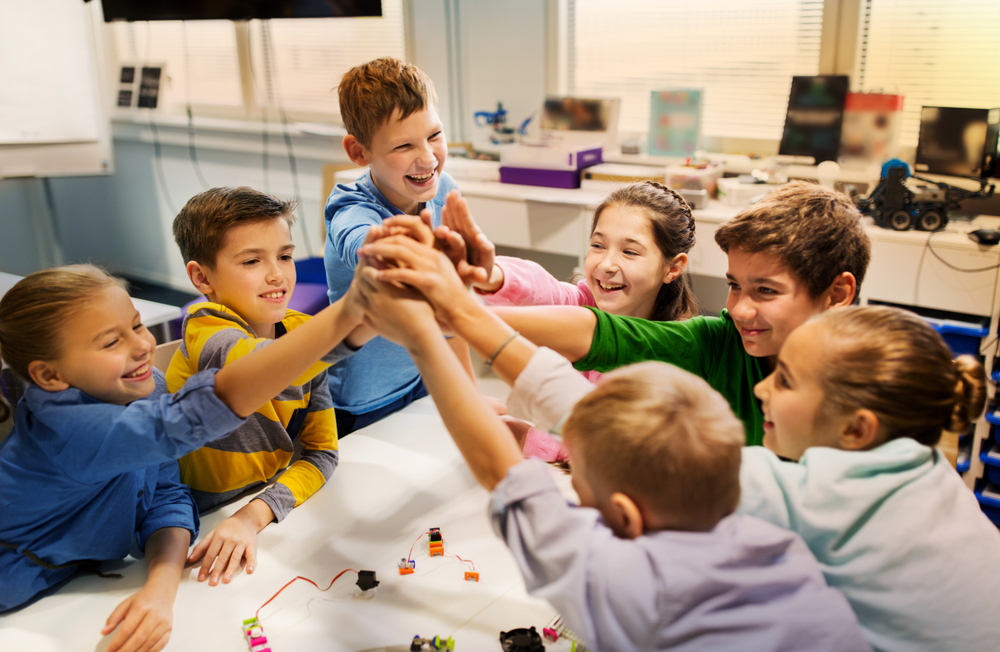The Power of Collaborative Groups
- January 12, 2023
- By Emily Walsh
The Power of Collaborative Groups

Collaboration is the key to success both in the classroom and in the real world. When you hear the term “collaborative groups” it’s easy to default your thinking to the dreaded group projects many of us as teachers remember we were forced to partake in when we were students ourselves. The ones where we inevitably had to do most of the work and the same grade was given to all the students in the group. But it’s time to shift our thinking when it comes to the power of collaborative groups in our teaching and learning environments today!
Collaborative groups working together on one common task or goal can extend student learning and teach valuable life skills. As teachers, we can also gather significant takeaways about our students when observing them learn and build skills together. Creating experiences where students can work with their peers to expand on their thinking, broaden their social skills, and be creative encourages students to take ownership of their learning.
It is the important job of the teacher to guide students in the act of working collaboratively so that each student will gain something from the experience.
What will it look like in my primary (K-2nd) classroom?
Creating an inclusive and collaborative environment might look different at different age levels. For younger students, this might take the form of a simple “turn and talk” style collaboration. Sitting knee-to-knee and practicing eye contact can build those early skills of speaking and listening that are important building blocks to learning and communication. In my own Kindergarten classroom, I found the most success by offering students various roles that they could choose from when working collaboratively. Providing these structured guidelines helped teach my students responsibility and helped to reign them in by giving them purpose within their group. Some example roles I used included: note taker, timekeeper, materials manager, presenter, and more. For first and second grade students, you could assign the tasks and allow them to create and assign their own roles within the group to allow for structure with some creativity incorporated.
What will it look like in my intermediate (3rd-5th) classroom?
For older students, it might look more like coming together to problem-solve an idea, practice critical thinking, or even just expound on their own thinking. With students working together, they will not only be able to understand how others think and gain some new perspectives, but their social and academic skills will flourish! Students can work together to create or agree upon their roles in the group. This will teach your students that everyone needs to play a part in order to be successful as a whole – which is a valuable life lesson. As the teacher, it will also allow you to make sure each one of your students is contributing.
How can I start today?
Kids Discover provides a platform with so many opportunities for collaboration among students! You could utilize the leveled passages and assign them to groups on similar topics with the end goal of teaching their classmates about what they read. You could create jobs such as “Researcher” or “Recorder” to help gather the information needed, and “Presenter” to teach it to the class in a way their group chooses. This voice and choice will allow creativity, as well as provide a deeper understanding of the topic.
Students will learn so much more when given the opportunity to work and create with their peers versus completing an assignment on their own. Give them a chance to talk and expand on their learning! Engage students in the learning and make it FUN!
The Power of Collaborative Groups Kids Discover Kids Discover Online